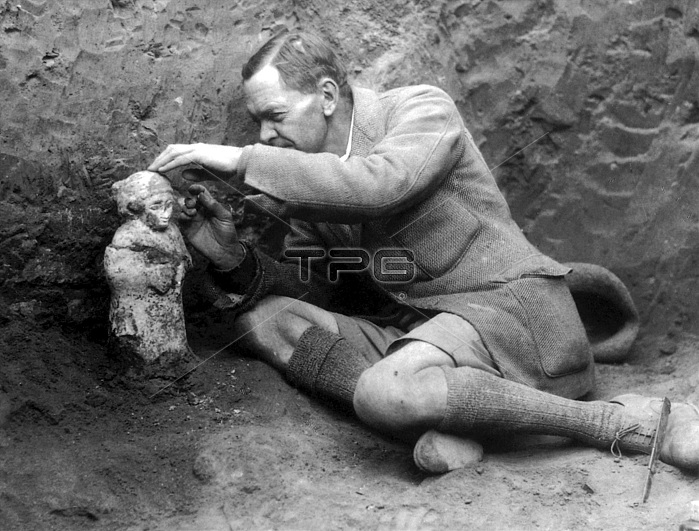
Woolley removes a buried figurine from a grave at Ur. Charles Leonard Woolley (April 17, 1880 - February 20,1960) was a English archaeologist best known for his excavations at Ur in Mesopotamia. He began his excavation career in 1906, later admitting that he had never studied archaeological methods even from books and had no idea how to make a survey or a ground plan. His work at Ur (in charge of the joint venture between the British Museum and the University of Pennsylvania) began in 1922. Ur was the burial site of what may have been many Sumerian royals and he discovered tombs of great material wealth. Inside these tombs were large paintings of ancient Sumerian culture at its zenith, along with gold and silver jewelry, cups and other furnishings. At Ur he developed new methods of excavating fragile, decayed, or broken artifacts. In 1936 he became interested in finding ties between the ancient Aegean and Mesopotamian civilizations. This led him to the Syrian city of Al Mina, and then onto Tell Atchana where he excavated in the years 1937-1939 and 1946-1949, during which palaces, temples, private houses and fortification walls were discovered, in 17 archaeological levels reaching from late Early Bronze Age. He is considered to have been one of the first modern archaeologists, and was knighted in 1935 for his contributions to the discipline of archaeology. He died in 1960 at the age of 79.
| px | px | dpi | = | cm | x | cm | = | MB |
Details
Creative#:
TOP22163394
Source:
達志影像
Authorization Type:
RM
Release Information:
須由TPG 完整授權
Model Release:
No
Property Release:
No
Right to Privacy:
No
Same folder images:

 Loading
Loading